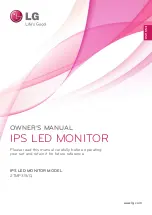
●
If the printer or cartridges are moved from a cold location to a warm and humid location, water from the air
could condense on the printer parts and cartridges, and could cause leaks and printer errors. In this case,
HP recommends that you wait at least 4 hours before turning on the printer or installing the cartridges, to
allow the water to evaporate. Check for condensation before turning on the printer.
●
The build unit must remain in the same environmental conditions while moving to and from the printer. If it
is exposed to different conditions at any time, the quality of its contents will be affected.
●
The printer, build unit, processing station, and stored material should always be kept in the same
environmental conditions; HP recommends keeping them in the same room.
●
The room should be free from liquids and condensation.
●
If printer is located in the same room as the processing station, please check processing station and
material environment specifications and adopt the most restrictive ones.
Ventilation
Ensure that the room in which the system is installed meets local environmental, health, and safety (EHS)
guidelines and regulations.
Fresh air ventilation is needed to avoid exposure to health hazards, and to maintain comfort levels. For a more
prescriptive approach to adequate ventilation, you could consult as guidance the latest edition of the ANSI/
ASHRAE (American Society of Heating, Refrigerating and Air-Conditioning Engineers) document
Ventilation for
Acceptable Indoor Air Quality
.
Adequate ventilation needs to be provided to ensure that potential airborne exposure to materials and agents is
adequately controlled according to their Safety Data Sheets. In some cases, and depending on the material used
with this equipment, local exhaust could be mandatory. Consult the Safety Data Sheets available at
to identify chemical ingredients of your consumables (material and agents), and
adequate ventilation, in section 8 of the SDS “Appropriate engineering controls”.
Airborne materials can be readily identified and quantified by using established indoor air-quality testing
protocols. HP performs these assessments during the development phase for all products.
HP testing shows that, during printer operation, the concentrations of airborne contaminants measured in the
workspace are consistently well below key occupational exposure limits. This observation is based on exposure
assessments that model very active productivity at customer facilities. Customers should recognize that actual
levels in their facilities are dependent on workspace variables they control such as room size, ventilation
performance, and duration of equipment use.
HP’s assessment concluded, based on the available scientific information, that airborne materials are not
expected to present a health hazard when there is a minimum of 10 ACH (air changes per hour) of fresh air
ventilation and a minimum room volume of 90 m
3
.
These specifications are valid for the following conditions: one HP printer, 20% of pack density, and 8 hours of
printing exposition time a day. If there is more equipment in the room, or different conditions, it is the customer’s
responsibility to ensure that the installation is compliant with the minimum ventilation rate to operate in safe
conditions.
If an air exhaust system is installed to evacuate air, and clean air is introduced to replace the air that is
evacuated, then the number of air changes per hour will be reduced to normal office requirements (around 3
ACH).
In addition to the workspace benefit provided by general room ventilation, intensive use of this printer system in
some customers’ facilities may necessitate the use of localized ventilation in order to provide a readily
acceptable working environment. This installation of localized exhaust for a printer frequently enables the
12
Chapter 2 Site preparation requirements for the printer
ENWW
















































